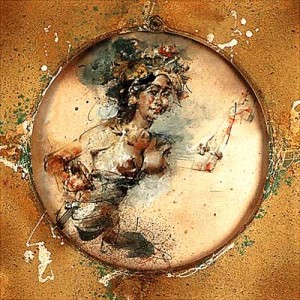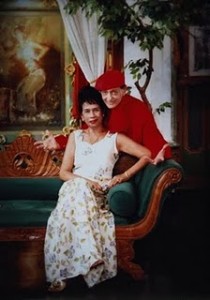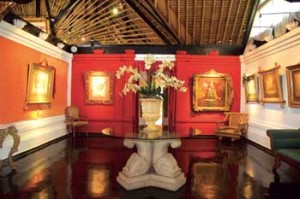There were two painters who decided to live in Bali and passionate about Bali life. They are Adrien-Jean Le Mayeur de Merpres and Don Antonio Maria Blanco. Both of them married to a beautiful Balinese dancer.
Adrien-Jean Le Mayeur de Merpres
Born in Brussel, 09 February 1880. Adrien Came to Bali by boat landed in Singaraja on 1932 and stayed in Denpasar. He was fascinated by the Balinese culture and its way of life. he got acquainted with 15-year-old legong dancer, Ni Nyoman Pollok, known by her nickname Ni Pollok , who later on became Le Mayeur’s model for his paintings.
A number of Le Mayeur’s Bali works using Ni Pollok as model were exhibited in Singapore for the first time in 1933, which turned to be a very successful exhibition and made him more widely known. Returning from Singapore, Le Mayeur bought a piece of land at Sanur beach and built a house. At this house, which was also Le Mayeur’s studio, Ni Pollok with her two friends worked every day as models. The beauty and splendid figure of Ni Pollok had made Le Mayeur enjoy his stay in Bali. At first he intended to stay only for 8 months, but later on he decided to stay in the island for the rest of his life.
After three years working together, in 1935, Le Mayeur and Pollok got married. Le Mayeur kept on painting with his wife as his model during their married life.
In 1958 Le Mayeur suffered from a severe ear cancer, and accompanied by Ni Pollok he returned to Belgium to have a medical treatment. After two months in Belgium, on 31 May 1958 the 78-year old painter died and was buried in Ixelles, Brussels. Ni Pollok then returned home to take care of her house which had become the Le Mayeur Museum. She stayed there until her death on 18 July 1985 at the age of 68.
Le Mayeur and Ni Pollok’s home is kept in its original condition and is still a museum where about 80 of Le Mayeur’s works are exhibited, as well as his collection of traditional Balinese art and local artifacts.
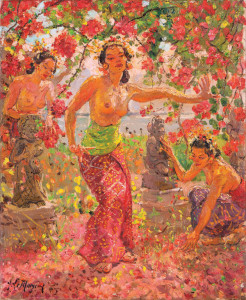
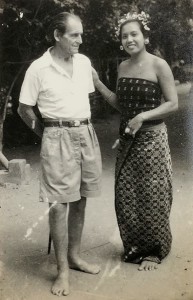
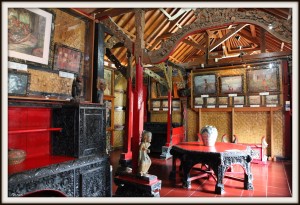
Don Antonio Maria Blanco
Blanco was born in Phillipines on 15 September 1912, however he is Spanish.
He initially lived and worked in Florida and California, United States, until he became interested in exploring the islands of the Pacific Ocean that had been a source of inspiration for painters such as Paul Gauguin, José Miguel Covarrubiasand others before him. He planned to go to Tahiti, but fate brought him to Hawaii, Japan and Cambodia, where he was a guest of honor of Prince Norodom Sihanouk.
From Cambodia he went to Bali in 1952 and married a traditional Balinese dancer named Ni Ronji in 1953. Bali gave Antonio important elements that he needed to develop his artistic gifts: the beautiful scenery, the dreamlike atmosphere of the environment and the pervasive art and great love.
Settled in Bali, Antonio began to realize his dreams in life and work. He built a house and museum in Ubud which contains many of his paintings.
The land was given the King of Ubud Tjokorda Gde Agung Sukawati. Women are the focal point of his paintings and one could say that Antonio was a painter of the eternal feminine and his style is romantic-expressive and dreamy.
Blanco received numerous awards, including the Tiffany Fellowship (special award from The Society of Honolulu Artists), Chevalier du Sahametrai of Cambodia, the Society of Painters of Fine Art Quality of President Sukarno and the Prize of the Art Critique in Spain. Antonio was also awarded the order of Cruz de Caballero from the King of Spain Juan Carlos I, giving him the title of “Don” in front of his name.
Many collectors have appreciated his paintings, including the actress Ingrid Bergman, Mexican telenovela queen Thalia (Ariadna Thalia Sodi Miranda), Sukarno (the first President of Indonesia),Suharto (the second presindet of Indonesia), the former Indonesian Vice President Adam Malik, Prince Norodom Sihanouk, Michael Jackson and many more.
The Blanco Renaissance Museum, Antonio’s lifetime dream, was opened on December 28, 1998 at his residence in a beautiful environment, where more than 300 works of Antonio are exposed in chronological order to show his artistic development. The sumptuous and impressive building offers a glimpse of the theatrical character of the artist. He emulated the flamboyance of Dali, to whom he has been compared.
Don Antonio Maria Blanco died on December 10, 1999 in Denpasar, Bali, from heart and kidney disease, survived by his wife and four children: Cempaka, Mario, Orchid and Mahadewi. Since Antonio converted to Hinduism, he had a cremation ceremony Balinese style in Ubud, finished on 28 December 1999.
